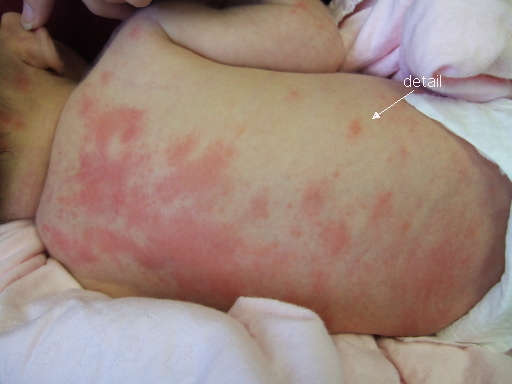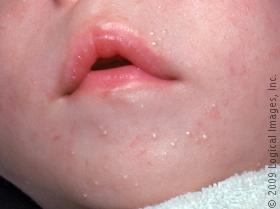Grand Rounds this week was a little bit like an average day in a primary care clinic: quite full, sometimes fun, and a little overwhelming. Definitely not boring! Three faculty members at the Santa Rosa Family Medicine Residency: Drs. Douglas Jimenez, Cherie Green, and myself presented a rapid medley of practice-changing papers from 2019 in obstetrics, pediatrics and adult medicine, respectively. Here are the the clinical questions, the papers, and a very abbreviated summary of each of our 2019 practice changers:
Obstetrics (Douglas Jimenez)
The question: Does ursodiol improve adverse perinatal outcomes in cholestasis?
The paper: Ursodeoxycholic Acid: versus placebo in intrahepatic cholestasis of pregnancy: A Randomized Controlled Trial (PITCHES), Chappell et al, Lancet 2019
Bottom line: In this study of ~600 women with cholestasis, ursodiol was safe (we knew this) but did NOT improve maternal itching symptoms or lead to a decrease in bile acids. Ursodiol also did not reduce the incidence of stillbirth, spontaneous preterm birth, or NICU admission. Ursodiol might reduce total preterm birth (iatrogenic plus spontaneous). The authors’ conclusions: the only intervention to affect adverse perinatal outcomes is delivery.
The question: What can bile acid levels tell us about adverse perinatal outcomes?
The paper: Association of adverse perinatal outcomes of intrahepatic cholestasis of pregnancy with biochemical markers: results of aggregate and individual patient data meta-analyses, Ovadia et al, Lancet 2019
Bottom line: The risk of stillbirth with cholestasis (usually quoted at 1-3%) increases markedly when bile acids are >100milimol/L. Most women with bile acids <100 can be reassured and should be rechecked weekly until delivery. For women with bile acids>100, delivery should occur between 35 and 36 weeks EGA.
The question: Does hydroxyprogesterone prevent recurrent preterm birth in singleton pregnancies?
The paper: 17-OHPC to Prevent Recurrent Preterm Birth in Singleton Gestations (PROLONG), Blackwell et al, American Journal of Perinatology, January 2020
Bottom line: In this study of 1700 women with a history of preterm labor, progesterone did NOT decrease recurrent preterm birth. There was also NO difference in any of the individual components that were part of the composite neonatal morbidity and mortality. Despite these findings, American College of Obstetricians and Gynecologists (ACOG) and Society for Maternal and Fetal Medicine (SMFM) have not changed their recommendations; they continue to recommend hydroxyprogesterone supplementation in all pregnant women with a singleton gestation and a history of a prior spontaneous preterm delivery.
Pediatrics (Cherie Green)
The question: Is high dose oral dexamethasone our only option for croup?
The paper: Prednisolone versus Dexamethasone for Croup: A Randomized Control Trial, Parker et al, Pediatrics, September 2019
Bottom line: Oral steroids are an effective treatment of croup, and the type of steroid (high dose dex (0.6mg/kg), low dose dex (0.15mg/kd), prednisolone (1mg/kg)) seems to have NO significant impact on efficacy either acutely or in the week after treatment.
The question: How accurate is the M-CHAT/F as a screening tool for autism?
The paper: Accuracy of Autism Screening in a Large Pediatric Network, Guthrie et al, Pediatrics, October 2019
Bottom Line: In this “real world” use of the MCHAT in 26,000 children, sensitivity was quite low at 39% with a positive predictive value of 15%; this is much lower than previous studies. However children who screened positive and were ultimately diagnosed with autism, were caught 7 months earlier than those who screened negative. Children of color and those from low income homes were found to have lower rates of screening, screen positive more often, and have more false positives. Be aware of the low sensitivity, and be SURE to follow-up positive MCHAT screens in a sensitive manner.
The question: Which leads to speedier recovery in sport-related concussion: rest or a bit of exercise?
The paper: Early Subthreshold Aerobic Exercise for Sport-related Concussion: a Randomized Clinical Trial, Leddy et al, JAMA Pediatrics February 2019
Bottom Line: Though the standard of care for sport-related concussion has been sustained rest until resolution of symptoms, this study of 100 teenage athletes shows that sub-symptom threshold aerobic exercise during the first week after injury safely speeds recovery in adolescents with concussion symptoms.
Adult Medicine (Veronica Jordan)
The question: Should we prescribe intermittent inhaled corticosteroids for mild asthma?
The paper: Budesonide-formoterol in adults with mild to moderate asthma, Hardy et al, Lancet September 2019
Bottom line: Yes, probably. In this study of ~900 patients with mild asthma, the combination of inhaled corticosteroids (ICS) and beta agonist (SABA) (Symbicort Turbohaler) used PRN led to reduced incidence of both moderate and severe asthma exacerbations. Europe changed their guidelines in 2019 and now recommend ICS-SABA prn as first line in mild asthma. In the US, we don’t have access to the Turbohaler, and the ICS-SABA is much more expensive than albuterol MDI. For very low risk patients, you can probably continue albuterol only, but for anyone with any more risk, consider Symbicort MDI (budesonide-formoterol).
The question: When should we stop and resume DOACs for patients with atrial fibrillation who are going for surgery?
The paper: Perioperative Management of Patients with Atrial Fibrillation Receiving a Direct Oral Anticoagulant, Douketis et al, JAMA Internal Medicine, August 2019
Bottom line: For patients who are on dabigatran, rivaroxaban, or apixaban for atrial fibrillation undergoing LOW bleeding risk surgeries/procedures (e.g. colonoscopy, dental extraction, pacemaker), stop DOAC 1 day before surgery, restart POD#1. For HIGH bleeding risk surgeries (most surgeries), stop DOAC 2 days before, restart 2-3 days after. Using this standardized perioperative management strategy, there are acceptable rates of bleeding and of arterial thromboembolism, but that number is not 0.
The question: What is new in the 2019 IDSA Pneumonia Guidelines?
The paper: Diagnosis and Treatment of Adults with Community-acquired Pneumonia. An Official Clinical Practice Guideline of the American Thoracic Society and Infectious Diseases Society of America, American Journal of Respiratory and Critical Care Medicine,, October 2019
Bottom line: These guidelines, available here: (https://www.atsjournals.org/doi/full/10.1164/rccm.201908-1581ST) are 23 pages long. Please feel free to read the entire thing. Here are my personal favorite practice changers: 1) Health care associated pneumonia (HCAP) is gone! RIP. 2) You only need blood and respiratory cultures in patients with pneumonia for whom you are treating empirically for either MRSA or pseudomonas 3) No steroids for non-severe CAP 4) Only cover anaerobes in presumed aspiration pneumonia if confirmed empyema or lung abscess (no more flagyl!) 4) Amoxicillin is now FIRST line treatment for uncomplicated outpatient CAP. 5) No routine CXR after pneumonia.




















